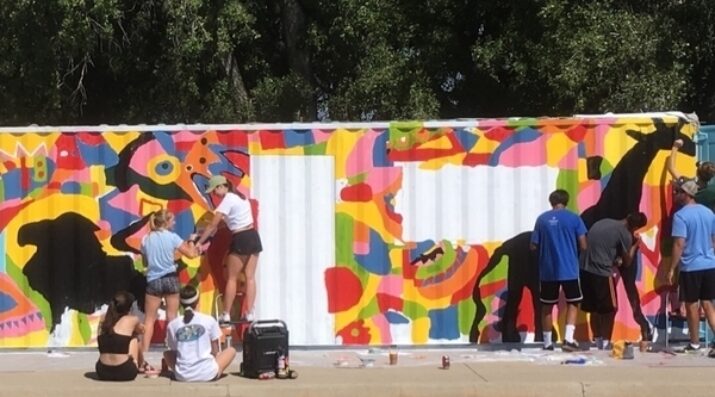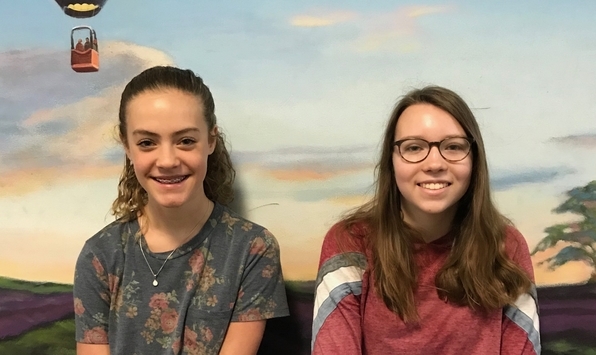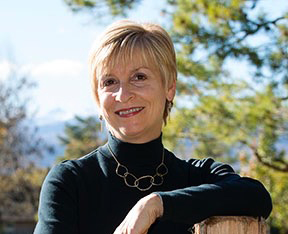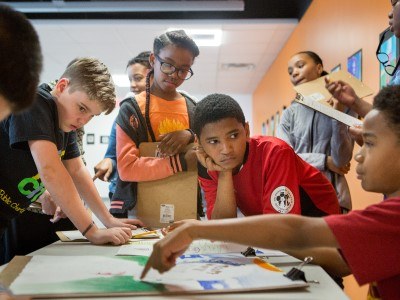Why Schools Need to Change
Engagement, Empathy, and Empowerment for Service
Topics

Today’s learners face an uncertain present and a rapidly changing future that demand far different skills and knowledge than were needed in the 20th century. We also know so much more about enabling deep, powerful learning than we ever did before. Our collective future depends on how well young people prepare for the challenges and opportunities of 21st-century life.
Practitioner's Guide to Next Gen Learning
Learners develop real-world skills and global mindsets through service projects at Sunset Middle School in Longmont, CO.
Principal Anthony Barela was taking me on a tour of Sunset Middle School (SMS) in Longmont, CO. We were just leaving the library, where he had shown off some furniture for flexible learning configurations. The new chairs, tables, and the futuristic reading nook hanging from the ceiling were impressive, to be sure. Still, it was a short interaction with students that took place out in the hallway that revealed how deeply this St. Vrain Valley School District middle school has embedded next gen learning in the everyday life of the school.
Halfway to the cafeteria, we were (politely) interrupted by three boys. One, a dark-haired young man in a red polo shirt, appeared to be the spokesperson for the group. Waving an index card back and forth, he requested a signature from his principal to authorize access to the school’s network for an upcoming project.
Asking an adult to sign a pass and grant an exception to a rule is a common occurrence in the daily life of a school. What surprised me, however, was the spontaneous and thoughtful problem-solving session that followed. Anthony skillfully guided the students to articulate the problem they were trying to solve, why they needed what they were asking for, and what alternative solutions might work.
In about five minutes, I was able to learn what Anthony obviously already knew about their project: the boys were organizing a Fortnite tournament to raise money for a local homeless shelter and were hoping to test their tech in a way that deviated from the original plan. When the boys left us, they had developed a clear set of next steps for their service project that did not involve a signature on the index card.
Many schools’ mission statements include phrases like “being a global citizen” or “solving problems in society.” As a member school in the International Baccalaureate (IB) Middle Years Programme, for example, SMS aspires to “develop internationally minded people” and empower learners to “become responsible members of local, national, and global communities.” What is striking about SMS is the breadth, coherence, and intentionality around accomplishing these goals.
For this month’s edition of Friday Focus: Practitioner’s Guide to Next Gen Learning, I spoke to Sunset Middle School’s principal, Anthony Barela, and Alex Armstrong, 7th grade math teacher and IB coordinator, about how learners are supported to live that mission of service while still in middle school. Specifically, they talked about how their program strives to:
- Build awareness of local and global challenges and innovation
- Develop empathy for others
- Cultivate agency, skills, and mindsets for problem-solving
Knowing—and Caring—about Others
Throughout their years at SMS, learners have numerous opportunities to develop awareness of problems in their community and in the wider world. For example, Alex describes a community service showcase event, one component in the Community Project Capstone all students undertake in grade 8. Representatives from a dozen community organizations as diverse as the Humane Society of Boulder, the local homeless shelter, and El Comité de Longmont speak to students about the work they do and why. According to Alex, even though these groups are local, “students come across ones they didn’t even know existed.”
As Anthony explains, awareness of both problems and “real-world examples of service and solutions” is key, but it is not enough. Students also have to develop empathy and a sense of responsibility and empowerment to create lasting, positive change in the community and also address the problems they see globally. For instance, he points to the work students do in restorative practices. Here, learners have “opportunities to hear about other people’s perspectives and ask themselves, ‘how do my actions have an impact on others, locally and globally?’ It’s really an eye-opening experience for them,” he says.
Similarly, Alex describes the grade 8 service project as a three-year process that begins with “figuring out what you care about.” She acknowledges that this is difficult for young learners, and that it “requires vulnerability to talk about what you care about.” Nevertheless, she observes that, with encouragement and modeling from adults, “By grade 8 many feel a personal connection to others, are passionate about current issues, and believe they can make a difference.” Alex notes that some students now enter eighth grade already knowing what problem they want to address with their capstone project.
Both Alex and Anthony cite a variety of projects that originated in students’ empathy with people in their community, as well as observations of problems that have a global impact. For example, one group of students was inspired to make a movie about poverty because they had seen people in their own community who did not have the basic necessities. In another project, after noticing how much waste was being thrown out at lunch, a group of students worked to transform SMS into a Boulder County Eco-Cycle Green Star School. Students with an environmental focus also worked to educate and provide resources to limit the use of plastic straws because of the harm they do to sea life.

For their Community Capstone Project, Maya Lary (left) and Anna Eastland (right) spent four months writing and staging a play about human trafficking, raising $1500 for domestic and international organizations addressing the issue.
(Courtesy of Alex Armstrong)
Empowering Learners to Take Action
According to Anthony, in addition to helping students perceive local and global needs, SMS equips them with a problem-solving mindset, what he calls “solutions orientation.” Inspired by principles of design thinking, educators create a culture of innovation and experimentation to empower students to be leaders in their community and globally engaged innovators.
Both Anthony and Alex refer to SMS as a safe place to exercise agency, take risks, and try out new ideas and solutions. This bias toward action applies to students and educators alike. Anthony notes that teachers are afforded “the space to try, fail, and refine” and students are encouraged to “learn by doing.” He considers it “a win as a principal that people are willing to take risks.”
Alex also gives credit to the school’s social emotional learning (SEL) program, which includes a strong empowerment and self-advocacy component. “We teach students how to exercise agency with family and friends. They can then integrate those skills with their academics and community service projects.”
Because interdisciplinary units, service projects, and real-world learning are woven throughout the program at all grade levels, learners also have plenty of opportunities to practice agency and problem-solving in authentic contexts and have an impact on the world outside of the school building.
Addressing Real-World Problems
One service project that illustrates learners’ authentic engagement with real-world challenges is Cougars Creating Classrooms, a collaborative service venture that included Niwot Elementary, Sunset Middle, Niwot High, and St. Vrain Valley Schools’ Career Development Center. This service project to build instructional space for Mwebaza Infant Primary School in Uganda arose, like so many other projects, from awareness and empathy.
Free public education in Uganda, students learned, typically ends at around age twelve and is, as Alex says, “massively underfunded.” So when students at SMS and other district schools heard about one overcrowded school that wanted to extend learning past that age but did not have enough classrooms, they came up with an innovative solution: to design, fabricate, and ship a building with three classrooms to Kyengera, Uganda.
What followed was nearly two years of interdisciplinary academic learning, skill-building, fundraising, and problem-solving to design, build, and ship a two-story building made out of shipping containers. Alex listed just a few of the ways that students applied content knowledge to the project, from using geometry, ratio, and proportion to complete engineering tasks and structural studies to researching customs requirements along the route and, of course, documenting every step of the process in writing. Learners also had opportunities to discover jobs they knew little about, like welding, or ones they had never heard of, like being a professional estimator.

A rendering of what the container classroom, designed by learners at Sunset Middle School, will look like when assembled at its destination in Kyengera, Uganda.
(Courtesy of The Mwebaza Foundation)
As she told the story of the container project, Alex’s face beamed. Opening her tablet, she showed me an animated map of the world and pointed to a red dot that indicated the route of the ship carrying the classroom. “Right now, the container classroom is sailing through the Suez Canal.”
With considerable humility, Anthony refers to SMS as “a work in progress.” For every strength he talked about, he shared at least one idea for future growth: deepening the advisory program, building educator capacity around assessment of projects, and forging even stronger relationships between adults and students.
Nevertheless, if the learners and their service projects are a reflection of the soul of the school, Sunset Middle School is living up to one of the central tenets of its mission, that students will “leave prepared for the future and empowered to make the world a better place.”
Resources
- This list of influencers provides links to TED talks, podcasts, and print resources about service learning, IB, and other sources of inspiration for Sunset Middle School’s program.
- Sunset Middle School’s learner-facing Service Actions Handbook shares detailed information about implementing service projects, including defining a need, planning the work, and reflecting on the project’s success and what the student learned from it.
- Edutopia’s collection of service learning resources supports educators to design projects, from elementary grades through high school, that boost learners’ civic engagement and help them take initiative to strengthen their community.
- The Real-World Learning Toolkit from NGLC MyWays provides activities, examples, and other learning design resources to support educators to access the Wider Learning Ecosystem and create authentic, meaningful learning aligned to MyWays’ broader definition of student success.
- Service Learning: Cultivating Personalized Experiences that Lead to Social Responsibility and Student Engagement - This 2024 article on NGLC's blog explores the ways that a personalized approach to service learning can empower students to apply their knowledge and skills as active, thoughtful, and engaged citizens of the global community.
Photo at top: Students from Niwot High School paint a mural on the walls of the container classroom for Mwebaza Infant Primary School in Kyengera, Uganda (Courtesy of Niwot High School).




